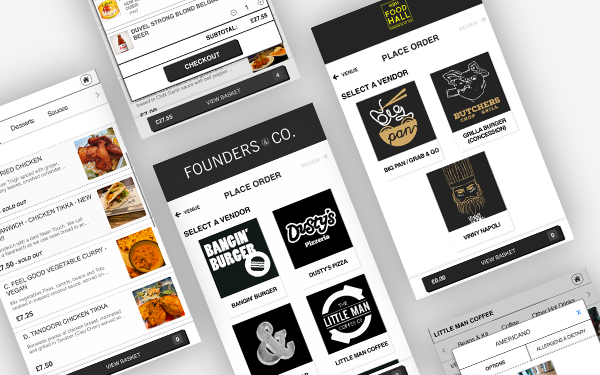In this guest post, our partners at Kobas explain how the latest developments in POS technology can be used to capitalise on the growing popularity of food halls.
The UK food hall scene is booming. Cashing in on the street food trend, there are already well over 40 hubs all over the UK offering an alternative dining experience.
What exactly is a food hall? Imagine a market or a department store full of food concessions. In fact, a marketplace for dining is an apt description. Many of the most prominent food halls have opened up in old market buildings, breathing a new lease of life into otherwise underutilised spaces.
Like the temporary food trucks and stalls you get at outdoor events, food halls feature a selection of kitchens offering different cuisines. With rapid QSR-style service, they offer choice, great value and, with large communal seating areas, a different kind of dining experience.
However, as in any line of business these days, customer expectations around the experience they receive are sky high. Business owners always have to be on the lookout for improvements they can make.
Back of the queue?
The food hall model presents some challenges. Imagine a family of four going out for dinner, and they all decide they want a different type of food. On the one hand, that’s the beauty of a food hall – the choice is there. On the other, one of the QSR-like features of the food hall concept is that there are no waiting staff, no table service. That means queuing at four different stalls to order four different meals.
For concession owners, queue management is a major pain point. Meals take time to prepare. And when different stalls are experiencing different order volumes, it can make it very difficult for parties wanting to order a variety of food to get their meals at the same time.
Further issues arise from traders running their own POS systems independently of one another. This makes it difficult to coordinate queue busting initiatives and other efficiency gains across stalls.
It also presents barriers to financial reporting and other data analytics. Food hall owners have to spend valuable time collating data from multiple siloed sources before they can run standard analysis into things like footfall, customer loyalty, sales patterns etc.
A connected solution
Food halls face these kinds of challenges when they function as a group of independent businesses sharing the same physical space. What we’re now seeing is operators trying to take a more integrated approach. With the latest technology, that can be achieved without infringing on the independence of individual traders.
The first step is to have a single, centralised cloud platform for POS. We’ve worked with food halls that have used Kobas Cloud to give concession holders their own individual accounts. They connect their POS hardware to a shared system but all the configuration – setting up menus, pricing, stock, rotas etc – is managed independently in a secure account.
A connected and centralised system offers a single customer view, allowing the food hall owner to see who their best customers are, which traders they like and what they like to buy. Data from all traders can be pulled into reports quickly and efficiently, cutting admin time significantly. When it comes to things like revenue sharing, it also boosts accuracy.
In these ways, connected cloud POS technology benefits food hall operators and traders. But what about customers? How can cloud-based systems be used to reduce queue times, including the need to wait in multiple queues?
One solution we’ve pioneered at Kobas is a multi-venue ordering app. Successfully deployed at the Founders & Co food hall in Swansea and at Hammonds of Hull, the app allows customers to order and pay from multiple traders, through one single mobile application. So instead of queuing several times over, groups can all order from the table through the QR code that we are now all so used to seeing in hospitality venues They get out-of-stock information and meal deals in real time. The app splits orders to the relevant concessions via the connected cloud, letting the customer know when their order has been accepted and what time it will be ready.
The app also allows customers to tip from the table, automatically distributing money to the relevant concessions. The app is available to download onto a mobile phone, but as this creates an extra point of friction for customers, it is also available as a web app that can be accessed from a browser – no signup or table number input needed!
Rather than relying on customers using their own mobiles, the app can also easily be installed on table tablets or kiosks to provide the kind of self-service option now familiar in QSR.
However it is deployed, the multi-venue ordering app improves the customer experience by providing a streamlined, integrated ordering and payment system that slashes waiting times. But it also benefits traders and operators by increasing order accuracy, customer satisfaction and total order value, providing a win-win that helps to take the already successful food hall concept a step forward.




